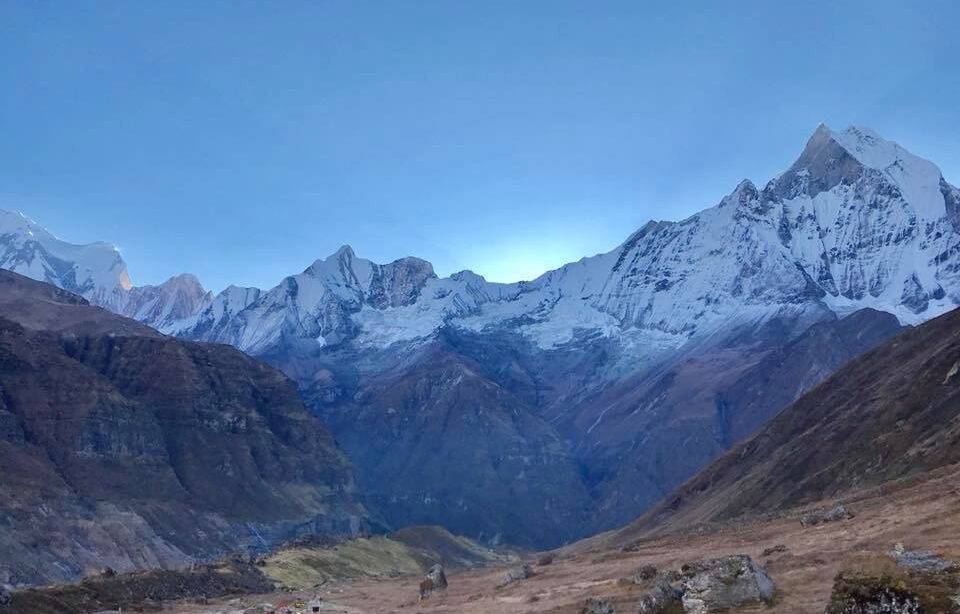
- Duration : 12 Days
- 4.5 Ratings
Annapurna Base Camp Trek
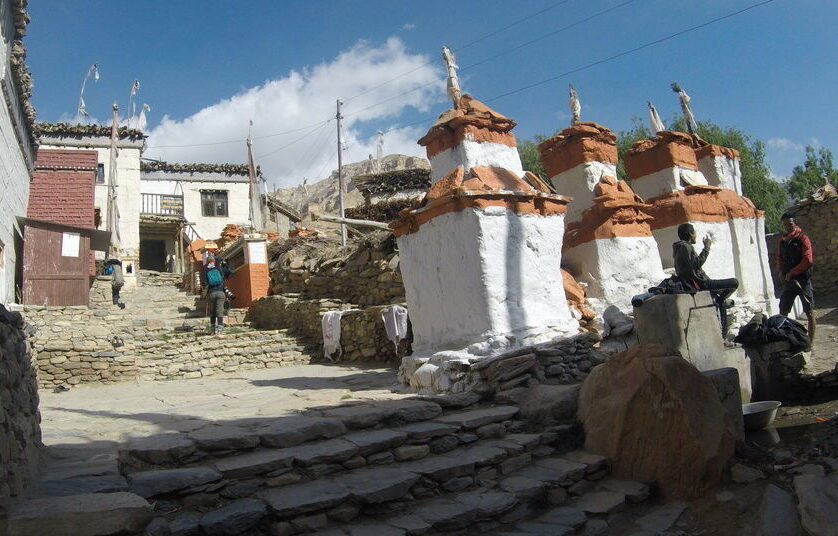
- Duration : 17 Days
- 4.5 Ratings
Upper Mustang Trek – 17 Days trip
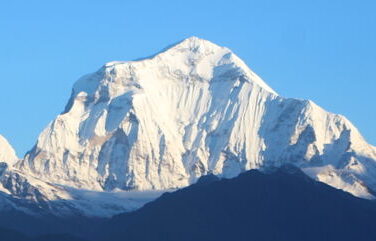
- Duration : 16 Dyas
- 4.5 Ratings
The Annapurna Circuit Trek stands as a crown jewel in the realm of trekking adventures, offering a mesmerizing odyssey through the heart of the Annapurna region in Nepal. Spanning approximately 160-230 kilometres (100-145 miles), depending on the specific itinerary chosen, this iconic trek is renowned for its awe-inspiring landscapes, cultural immersion, and challenging terrain. Throughout around 14 to 21 days, trekkers embark on a transformative journey that takes them from the bustling streets of Kathmandu to the serene shores of Pokhara, weaving through a tapestry of diverse environments and experiences along the way.
The Annapurna Circuit Trek typically begins with a scenic drive or flight from Kathmandu to Besisahar, which serves as the starting point for the adventure. From here, trekkers gradually ascend through a series of lush forests, terraced farmlands, and charming villages inhabited by diverse ethnic communities, including Gurungs, Magars, and Manangis. Each day brings new vistas and challenges as trekkers navigate winding trails and rugged terrain, immersing themselves in the region’s natural beauty and cultural heritage. One of the defining features of the Annapurna Circuit Trek is the crossing of the Thorong La Pass, the highest point at an elevation of 5,416 meters (17,769 feet). This formidable ascent requires careful acclimatization and offers breathtaking panoramic views of the surrounding Himalayan peaks, including Annapurna II, III, IV, and the iconic Machapuchare (Fishtail). The crossing of Thorong La Pass is a pivotal moment in the journey, symbolizing the triumph of perseverance and resilience in the face of adversity.
Beyond Thorong La Pass, the trek descends into the Mustang region, a mystical land known for its arid landscapes, ancient monasteries, and vibrant Tibetan Buddhist culture. Trekkers traverse through quaint villages such as Muktinath and Kagbeni, where they can immerse themselves in the region’s unique cultural heritage and interact with local communities. Along the way, trekkers are treated to stunning views of the Mustang Valley and the surrounding Himalayan peaks, creating unforgettable memories that will last a lifetime. Throughout the trek, trekkers can stay in rustic tea houses or lodges, where they can enjoy warm hospitality, hearty meals, and a chance to connect with fellow travellers from around the globe. These cosy accommodations serve as havens of respite amidst the rugged terrain, offering a sense of camaraderie and companionship that enhances the trekking experience.
The Annapurna Circuit Trek concludes in the picturesque lakeside town of Pokhara, where trekkers can unwind and reflect on their incredible journey amidst the tranquil surroundings of Phewa Lake and the Annapurna Range. Here, amidst the gentle lapping of water and the whispering winds, adventurers find solace and reflection, contemplating the profound experiences they have encountered and the personal growth they have achieved along the way.
The Annapurna Circuit Trek is a transformative journey that allows trekkers to immerse themselves in the Annapurna region’s natural beauty and cultural richness. From the towering peaks of the Himalayas to the charming villages of the Mustang Valley, every step of the trek is imbued with adventure, discovery, and personal growth. Whether experienced trekkers or first-time adventurers, those who undertake the Annapurna Circuit Trek will surely come away with memories and experiences that will last a lifetime.
In the heart of the Annapurna Circuit lies a profound sense of spirituality that transcends the physical landscapes and reaches deep into the souls of trekkers. As one embarks on this awe-inspiring journey through the majestic Himalayas, they are greeted by a profound connection to nature and a reverence for the divine that permeates every step. The rugged terrain and towering peaks serve as a backdrop for spiritual introspection, inviting pilgrims to embark on a transformative inner journey.
Amidst the serene beauty of the Annapurna region, trekkers encounter ancient monasteries, Buddhist stupas, and colourful prayer flags that adorn the landscape like divine whispers. These sacred sites serve as portals to a realm beyond the physical, where one can contemplate the mysteries of existence and commune with the higher realms of consciousness. The rhythmic chanting of monks and the soothing sound of prayer wheels spinning in the breeze create an atmosphere of tranquillity and reverence, inviting trekkers to pause and reflect on the deeper meaning of life. At the heart of the Annapurna Circuit lies the legendary Thorong La Pass, the trek’s highest point at an elevation of 5,416 meters (17,769 feet). As trekkers ascend to this lofty summit, they are met with awe and humility in the face of nature’s grandeur. Here, amidst the swirling mists and towering peaks, one can experience a profound sense of connection to the universe and recognition of one’s place within the cosmic tapestry.
Throughout the journey, encounters with local communities offer insights into the spiritual traditions and practices of the Himalayan people. From the various carnivals that celebrate the cycle of life and death to the simple acts of kindness and hospitality extended by townies along the trail, every commerce memorialises the interconnectedness of all beings and the significance of living in harmony with nature. Yet, perhaps the most profound spiritual lessons are found in the quiet moments of solitude amidst the vast expanse of the mountains. Here, far from the distractions of modern life, trekkers can tap into a deeper sense of inner peace and clarity. As they gaze upon the snow-capped peaks and listen to the whispers of the wind, they are reminded of the impermanence of all things and the need to embrace each moment with gratitude and mindfulness.
The Annapurna Circuit is not merely a physical journey but a spiritual pilgrimage that invites trekkers to explore the depths of their souls and connect with something greater than themselves. It is a testament to the power of nature to awaken the spirit and nourish the soul, leaving a lasting imprint long after the journey has ended.
Choosing the optimal time to embark on the Annapurna Circuit is crucial for ensuring a memorable and enjoyable trekking experience amidst the breathtaking landscapes of the Himalayas. The best time to hit the Annapurna Circuit is spring and autumn, which offer favourable weather conditions and stunning natural beauty. From March to May, spring blankets the region in a riot of colours as rhododendrons burst into bloom, painting the hillsides with vibrant hues. The weather during this time is mild and stable, with clear skies and comfortable temperatures, making it ideal for trekking. Moreover, the trails are less crowded compared to the peak season, allowing trekkers to enjoy a more tranquil and immersive experience amidst the serene beauty of the Annapurna region.
Similarly, the autumn months of September to November are another prime time to undertake the Annapurna Circuit trek. During this season, the monsoon rains have cleared, leaving behind crisp days and spectacular mountain views. The lush greenery of the summer months gives way to golden landscapes, creating a stunning contrast against the snow-capped peaks of the Himalayas. The weather remains dry and pleasant, with mild temperatures during the day and cool nights, providing optimal trekking conditions for outdoor enthusiasts. Additionally, the autumn season coincides with several cultural festivals and celebrations in the region, offering trekkers the opportunity to immerse themselves in the rich cultural heritage of the Himalayan communities.
While spring and autumn are considered the best times to trek the Annapurna Circuit, each season offers unique charms and experiences. Spring is renowned for its colourful floral displays and blossoming landscapes, while autumn is prized for its clear skies and panoramic mountain views. Deciding when to undertake the Annapurna Circuit trek depends on personal preferences and interests. Whether you prefer to trek amidst the vibrant colours of spring or the golden hues of autumn, one thing is certain – the Annapurna Circuit promises an unforgettable adventure filled with stunning scenery, rich culture, and awe-inspiring natural beauty, no matter the season.
Experience the diverse tapestry of landscapes as you journey through the Annapurna region. Begin amidst lush subtropical forests, meander through terraced farmlands adorned with vibrant crops, ascend into alpine meadows adorned with colourful wildflowers, and finally, traverse the arid high-altitude deserts, each offering its own unique charm and beauty.
Challenge yourself to conquer the mighty Thorong La Pass, standing tall at an awe-inspiring elevation of 5,416 meters (17,769 feet). Reach the pinnacle and be rewarded with breathtaking panoramic vistas of the surrounding Himalayan peaks, a truly unforgettable moment etched into memory forever.
Stand in awe before the majestic Annapurna mountain range, a sight to behold. Marvel at the towering peaks of Annapurna II, III, and IV, alongside the iconic Machapuchare (Fishtail), creating a dramatic backdrop against the azure sky. Let your gaze wander to the distant horizons, where Dhaulagiri and Manaslu command attention with their grandeur.
Immerse yourself in the rich tapestry of cultures woven throughout the Annapurna region. Wander through traditional villages inhabited by diverse ethnic groups such as the Gurungs, Magars, Manangis, and Thakalis, each preserving their unique traditions, languages, and way of life.
Journey through time as you explore ancient monasteries, Buddhist stupas, and colorful prayer flags adorning the landscape. Gain insights into the spiritual traditions and practices of the Himalayan people, and feel a sense of tranquility and reverence in these sacred spaces.
Indulge in moments of relaxation and rejuvenation amidst nature’s bounty. Unwind your tired muscles in natural hot springs nestled amidst breathtaking mountain scenery, such as those found in Tatopani and Jhinu Danda. Let the soothing warmth of the water and the serene surroundings envelop your senses, offering moments of blissful tranquillity.
Experience the authentic warmth and hospitality of local communities as you immerse yourself in village life. Along the trekking route, stay in rustic tea houses or cozy lodges, where friendly villagers welcome you with open arms, sharing stories and traditions that have been passed down through generations.
Embark on a journey through the mystical Mustang region, a land steeped in ancient Tibetan Buddhist culture and tradition. Explore ancient monasteries perched atop rugged cliffs, witness vibrant prayer flags fluttering in the mountain breeze, and traverse landscapes reminiscent of the Tibetan Plateau, each step a testament to the region’s rich history and heritage.
Conclude your epic trek in the enchanting lakeside town of Pokhara, a tranquil oasis nestled in the embrace of the Annapurna Range. Relax by the shimmering waters of Phewa Lake, where the majestic mountains cast their reflections, and soak in the serene ambience of this idyllic paradise, a perfect ending to your Himalayan adventure.
Upon your arrival at Tribhuvan International Airport in Kathmandu, you’ll be greeted by our representative who will warmly welcome you to Nepal. After a long journey, you’ll be escorted to your hotel for check-in. As you settle in, take some time to unwind and refresh before venturing out to explore the vibrant streets of Kathmandu. Immerse yourself in the rich cultural heritage of the city by visiting UNESCO World Heritage Sites such as Kathmandu Durbar Square, a historic plaza adorned with ancient temples and palaces, and Swayambhunath Stupa, a revered Buddhist pilgrimage site offering panoramic views of the Kathmandu Valley. As the day draws to a close, retreat to your hotel for a well-deserved rest and prepare for the adventure ahead.
Embark on an early morning journey from Kathmandu to Besisahar, a bustling town located at the gateway to the Annapurna Circuit. The picturesque journey leads you along meandering mountain pathways and charming villages, providing insights into the rural lifestyle of Nepal. Upon reaching Besisahar, transfer to another vehicle and continue the journey to Chamje, a charming village nestled amidst verdant hills and cascading waterfalls. Marvel at the region’s natural beauty and rich tapestry of traditions as you travel. Upon arrival in Chamje, take some time to acclimate to the altitude and participate in a trek briefing to prepare for the adventure ahead. Overnight stay in Chamje.
The trekking adventure begins with a gentle ascent from Chamje, crossing the Marsyangdi River multiple times via swaying suspension bridges. Traverse through lush timbers bulging with different foliage and fauna, and pass by terraced fields cultivated by original growers. En route, encounter traditional townlets inhabited by indigenous Gurung communities, known for their warm hospitality and unique artistic traditions. As you approach Dharapani, be greeted by breathtaking mountain vistas and the tranquil ambiance of this remote Himalayan village. Spend the evening exploring the vill and interacting with locals to gain perceptivity into their way of life. Dharapani is where you’ll stay for the night.
Continue your trek along the Marsyangdi River, ascending through verdant pine forests and rhododendron groves. Marvel at the panoramic views of the Annapurna and Manaslu ranges unfolding before you, painting a surreal backdrop to your journey. As you approach Chame, the administrative hub of the Manang District, be captivated by the vibrant atmosphere of this bustling mountain town. Take time to explore the local marketplaces, visit ancient monasteries, and indulge in a soothing soak at the nearby hot springs to rejuvenate tired muscles. Sleep soundly in the mountain-peeking and glamouring Chame.
Delve on a scenic trek through verdant forests and charming villages, with the majestic Lamjung Himal towering in the distance. Cross the Marsyangdi River via a picturesque suspension bridge and ascend to Upper Pisang, a quaint village nestled amidst terraced fields and prayer flags fluttering in the mountain breeze. Explore the ancient Upper Pisang Monastery, a spiritual haven offering panoramic views of the girding peaks. As the day draws to a close, soak in the serene ambiance of this Himalayan sanctuary and marvel at the natural beauty that surrounds you. Overnight stay in Upper Pisang.
Continue your journey through the rugged terrain of the Annapurna region, with awe-inspiring views of Annapurna II and III dominating the horizon. Traverse through traditional Tibetan-style villages adorned with colorful prayer flags and intricately carved mani walls, immersing yourself in the rich cultural tapestry of the Himalayas. Arrive in Manang, a picturesque village perched at an altitude of 3,540 meters, where you’ll be greeted by the warm hospitality of the local community. Explore the village’s labyrinthine alleyways, visit the Himalayan Rescue Association for altitude sickness awareness, and marvel at the surrounding peaks bathed in the golden hues of the setting sun. Go to sleep amidst the mountains and glaciers surrounding Manang.
Take a well-deserved rest day in Manang to acclimatize to the high altitude and prepare for the challenging ascent ahead. Embark on a leisurely hike to Gangapurna Lake, a serene alpine oasis nestled amidst snow-capped peaks and shimmering glaciers. Visit the nearby Bhojo Gompa, a sacred Buddhist monastery steeped in centuries of history and tradition. Engage with the local community, learning about their time-honored customs and way of life, and soak in the spiritual ambiance of this Himalayan sanctuary. Spend the day at a relaxed pace, savoring the tranquility of the mountains and rejuvenating your body and mind for the adventures that lie ahead. You get to stay in Manang for one more day.
Embark on a scenic trek through alpine meadows and verdant yak pastures, with panoramic views of Annapurna III, Gangapurna, and Tilicho Peak unfolding before you. Traverse across rocky terrain and ancient chortens, marveling at the rugged beauty of the Himalayan landscape. Arrive at Yak Kharka, a charming settlement nestled amidst the rugged peaks of the Annapurna range, where you’ll be greeted by the tranquil ambiance of the mountains. Take time to rest and acclimate to the high altitude, soaking in the pristine beauty of your surroundings and preparing for the challenges that lie ahead. Overnight stay in Yak Kharka.
Continue your ascent through the barren landscapes of the Annapurna region, passing by ancient chortens and prayer flags fluttering in the mountain breeze. Traverse across rocky terrain and steep inclines, with breathtaking views of the surrounding peaks inspiring you every step of the way. Arrive at Thorong Phedi, the base camp for the challenging ascent to Thorong La Pass, where you’ll be greeted by the awe-inspiring beauty of the Himalayas stretching out before you. Take time to rest and prepare for the arduous journey ahead, ensuring you’re well-equipped for the challenges of crossing the highest pass in the world. Overnight stay in Thorong Phedi.
Rise before dawn and embark on the exhilarating ascent to Thorong La Pass, the highest point of the trek at an elevation of 5,416 meters. Trek through a rugged landscape of snow and ice, with panoramic views of the Annapurna and Dhaulagiri ranges unfolding before you. As you reach the summit of Thorong La Pass, take a moment to savor the sense of accomplishment and marvel at the breathtaking beauty of the Himalayas stretching out in all directions. Descend carefully to Muktinath, a sacred pilgrimage site revered by both Hindus and Buddhists for its spiritual significance. Explore the ancient Muktinath Temple, a symbol of religious harmony, and soak in the serene ambiance of this Himalayan sanctuary. Overnight stay in Muktinath.
As the sun rises, embark on a descent from the sacred site of Muktinath, traversing through the arid, otherworldly landscapes of the Mustang region. Along the way, immerse yourself in the unique beauty of the terrain, characterized by rugged hillsides and vast expanses of barren earth. Trek back towards Jomsom, retracing your steps along familiar trails adorned with prayer flags and ancient monasteries. Upon reaching Jomsom, take a moment to appreciate the serene atmosphere of this quaint town nestled amidst the Himalayan foothills. Spend the evening at leisure, reflecting on the day’s journey and soaking in the tranquility of the surrounding landscapes. Retire for the night in Jomsom, where the crisp mountain air and starry skies promise a peaceful rest.
Rise early to catch a breathtaking flight from Jomsom to Pokhara, treating yourself to unparalleled views of the majestic Annapurna and Dhaulagiri ranges from the air. Upon landing in Pokhara, revel in the natural splendor of this lakeside city, where pristine waters mirror the towering peaks that frame the horizon. Spend the day leisurely exploring Pokhara’s charming streets, adorned with vibrant boutiques, cozy cafes, and lush gardens. As the sun sets over Phewa Lake, find a peaceful spot to unwind and reflect on the unforgettable experiences of the trekking journey. Retreat to your accommodation in Pokhara, where the warm hospitality of the locals and the comforts of modern amenities await.
Depart Pokhara in the morning, embarking on a scenic drive back to the vibrant capital city of Kathmandu. En route, soak in the picturesque landscapes of rural Nepal, dotted with terraced fields, quaint villages, and rolling hills. Upon arrival in Kathmandu, take advantage of the opportunity to explore the city’s bustling markets, ancient temples, and cultural landmarks. Indulge in a delicious meal of traditional Nepali cuisine at a local restaurant, savoring the rich flavors and aromatic spices that define the country’s culinary heritage. Retire to your accommodation in Kathmandu, where you can relax and reminisce about the highlights of the Annapurna Circuit Trek.
Bid farewell to the enchanting land of Nepal as you transfer to Tribhuvan International Airport for your onward journey or flight back home. Reflect on the memories created during your trekking adventure, from the awe-inspiring landscapes of the Annapurna Circuit to the warm hospitality of the Nepalese people. Depart with a sense of gratitude for the transformative experiences and cherished friendships formed along the way, carrying with you the spirit of adventure and exploration nurtured amidst the Himalayan wilderness.
Annapurna Circuit Trek Map
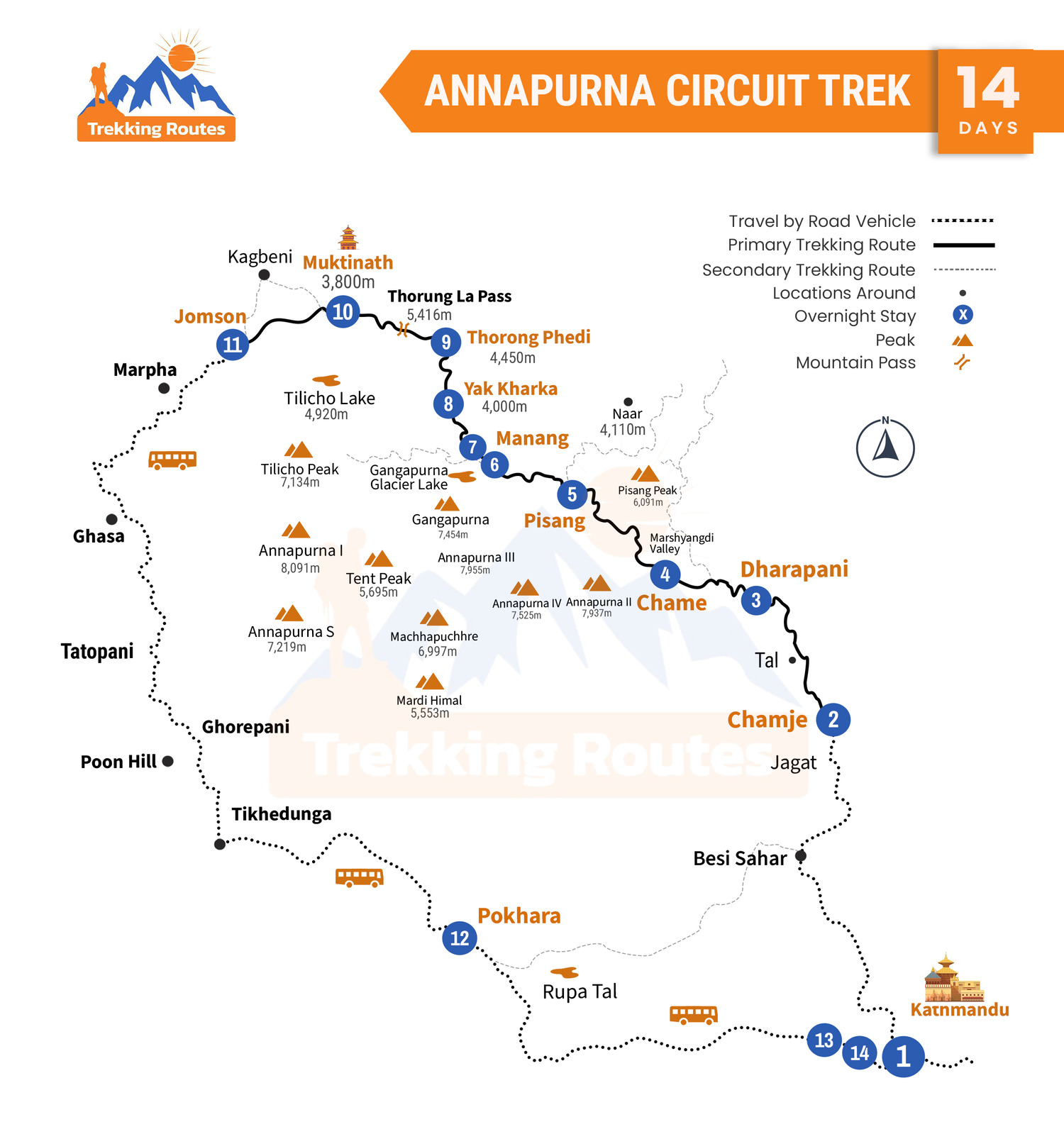
Trekking Boots: Invest in sturdy, comfortable trekking boots with ankle support to navigate varied terrain and protect your feet from blisters and injuries.
Backpack: Choose a lightweight, durable backpack with sufficient capacity to carry your essentials, including clothing, water, snacks, and personal items.
Clothing Layers: Pack a mix of lightweight and warm clothing layers to adapt to changing weather conditions. Include moisture-wicking base layers, insulating mid-layers, and waterproof outer layers.
Sleeping Bag: Bring a quality sleeping bag suitable for cold temperatures to ensure a comfortable night’s rest at teahouses along the trekking route.
Trekking Poles: Consider using trekking poles to provide stability and reduce strain on your knees and joints, especially during steep ascents and descents.
First Aid: Pack a kit with essential supplies, including bandages, antiseptic wipes, pain relievers, blister treatment, and any personal medications.
Sun Protection: Bring sunglasses, sunscreen with high SPF, and a wide-brimmed hat to protect your skin and eyes from the intense Himalayan sun.
Headlamp or Flashlight: Ensure you have a reliable headlamp or flashlight with extra batteries for navigating trails and finding your way in the dark, especially during early morning starts or late arrivals at teahouses.
Personal Hygiene Items: Pack essential personal hygiene items, including toilet paper, hand sanitizer, wet wipes, and a small towel, for maintaining cleanliness and hygiene during the trek.
Snacks and Energy Food: Bring high-energy snacks such as nuts, dried fruits, energy bars, and chocolate to fuel your trekking adventures and provide quick energy boosts on the trail.
Camera: Capture the breathtaking landscapes and memorable moments of your Annapurna Circuit Trek with a lightweight camera or smartphone, along with extra memory cards and batteries.
Cash: Carry enough Nepalese rupees in cash to cover personal expenses along the trekking route, as ATMs may be limited or unavailable.
Fitness:
Fitness plays a crucial role in ensuring a successful and enjoyable Annapurna Circuit Trek, as the journey entails traversing diverse landscapes and ascending to high altitudes. Trekkers are advised to engage in regular physical activity prior to the trek to build endurance, strength, and cardiovascular fitness. Incorporating activities such as hiking, jogging, cycling, and strength training into one’s fitness regimen can help prepare the body for the rigors of trekking in the Himalayas.
Accommodation
Along the Annapurna Circuit, trekkers can expect to find a variety of teahouse accommodations scattered throughout the route, providing a comfortable resting place after a day of trekking. From cozy guesthouses nestled amidst terraced fields to rustic lodges perched on mountain slopes, these accommodations offer basic amenities such as meals, hot showers, and communal dining areas, allowing trekkers to recharge and connect with fellow adventurers amidst the tranquil beauty of the Himalayan landscapes.
Difficulty
While the Annapurna Circuit Trek presents challenges such as high altitude and long trekking days, it is accessible to trekkers with a moderate level of fitness and determination. The well-defined trails and teahouse accommodations provide essential support along the route, allowing trekkers to focus on enjoying the journey and soaking in the beauty of their surroundings. With proper preparation, including physical training and acclimatization, trekkers can overcome the challenges and relish the rewarding experiences that await them in the Himalayas.
Route
The Annapurna Circuit Trek encompasses a mesmerizing journey that commences in the bustling city of Besisahar, gradually ascending through verdant forests, terraced fields, and quaint villages. Trekkers traverse along the Marsyangdi River, witnessing its turquoise waters carving through the rugged landscapes, before ascending to higher elevations and crossing the formidable Thorong La Pass, a breathtaking vantage point offering panoramic views of the surrounding peaks. Descending into the Mustang region, the trail meanders through arid valleys, ancient monasteries, and traditional Tibetan villages, culminating in the tranquil lakeside city of Pokhara, where trekkers can unwind amidst the serene Phewa Lake and vibrant streets.
Permits
Permits are essential documents required for trekking in the Annapurna Circuit, ensuring compliance with local regulations and supporting conservation efforts in the region. There are two main permits that trekkers need to obtain before embarking on the trek: the Annapurna Conservation Area Permit (ACAP) and the Trekkers’ Information Management System (TIMS) card.
The Annapurna Conservation Area Permit (ACAP) is issued by the National Trust for Nature Conservation (NTNC) and is mandatory for all trekkers entering the Annapurna Conservation Area. This permit helps fund conservation projects, trail maintenance, and environmental protection initiatives within the region. Trekkers can obtain the ACAP either in Kathmandu or Pokhara, as well as at various entry checkpoints along the trekking route.
The best time to do the Annapurna Circuit Trek is during the spring (March to May) and autumn (September to November) seasons when the weather is clear and stable, offering the best mountain views.
The Annapurna Circuit Trek is considered moderately difficult and is suitable for trekkers with a reasonable level of fitness. Prior trekking experience is recommended but not mandatory.
Trekkers need two permits: the Annapurna Conservation Area Permit (ACAP) and the Trekker's Information Management System (TIMS) card, which can be obtained in Kathmandu or Pokhara before starting the trek. TAAN Secretariat at Maligaun, Kathmandu and TAAN Secretariat in Pokhara.
The Annapurna Circuit Trek involves both ascents and descents, crossing high mountain passes like Thorong La, and trekking on varied terrain. While it is moderately difficult, it is achievable with proper preparation and acclimatization.
Accommodation along the trekking route consists of tea houses or lodges, offering basic amenities such as a bed, blanket, and meals. Rooms may be shared, and facilities vary depending on the altitude.
The trekking packages include three meals a day (breakfast, lunch, and dinner) along with tea or coffee. Meals typically consist of local dishes such as dal bhat (rice and lentils), noodles, soup, and Tibetan bread.
Yes, bottled water is available for purchase at tea houses along the route. However, it's advisable to bring water purification tablets or a filtration system to reduce plastic waste.
Although some ATMs are available along the trekking route, it's advisable to carry enough cash (Nepalese Rupees) for the duration of the trek to cover any additional personal expenses.
Some tea houses offer charging facilities for a fee, usually using solar power. However, charging options may be limited, and it's advisable to bring a portable power bank for backup.
Mobile phone reception is available in most areas along the route, especially in villages and towns. However, signal strength may vary, and it's not guaranteed in remote areas.
Essential items to pack include clothing suitable for varying weather conditions, trekking boots, a sleeping bag, personal medications, a first aid kit, sunscreen, and a camera.
Yes, travel insurance that covers high-altitude trekking, medical emergencies, and evacuation is mandatory for the Annapurna Circuit Trek. Ensure your insurance policy provides adequate coverage for the duration and activities of the trek.
No, we do not offer customizable itineraries to suit individual preferences, fitness levels, and time constraints. It is essential to consider factors such as acclimatization and trekking duration.
In case of an emergency, trekking guides and porters are trained to handle medical situations and coordinate evacuations if necessary. Helicopter rescue services are available for evacuations to Kathmandu in severe cases.
Restroom facilities, also known as "tea house toilets," are available at most tea houses along the route. These are basic squat toilets and may require a small fee for use.
Yes, it is possible to trek to Annapurna Circuit independently, but it's advisable to have prior trekking experience and good navigational skills. Travelling with an agency is the best option for safety and support.
Cultural highlights include visits to Gurung and Magar villages, monasteries, and interactions with local communities to learn about their traditions, customs, and way of life.
Thorong La Pass is the highest point of the Annapurna Circuit Trek, located at an altitude of approximately 5,416 meters (17,769 feet) above sea level.
Adequate acclimatization is essential to prevent altitude sickness. It's recommended to ascend gradually, stay hydrated, and listen to your body. Diamox (acetazolamide) can be used for altitude sickness prevention under medical guidance.
While there are no strict age restrictions, trekkers should be in good health and have a reasonable level of fitness. It's advisable to consult with a doctor before undertaking the trek, especially for elderly or those with pre-existing medical conditions.
Weather conditions can vary depending on the season. During the spring and autumn seasons, the weather is generally clear and stable, with mild daytime temperatures and cold nights. Winter trekking (December to February) is also possible but colder, with occasional snowfall.
The terrain varies from lush forests and terraced fields to rocky paths and alpine meadows. There are also some steep ascents and descents, especially in the higher altitudes.
Altitude sickness can occur at higher elevations, especially if ascent is too rapid. It's important to acclimatize properly, stay hydrated, and be aware of the symptoms of altitude sickness such as headache, nausea, and fatigue.
The Annapurna Circuit Trek offers a plethora of highlights, including crossing the formidable Thorong La Pass, exploring diverse landscapes from lush forests to barren highlands, encountering unique cultural villages like Manang and Marpha, and witnessing panoramic views of the Annapurna and Dhaulagiri ranges.
Yes, many trekking gear shops in Kathmandu and Pokhara offer rental services for trekking gear such as sleeping bags, trekking poles, and down jackets. However, it's advisable to check the quality and condition of the rented equipment before embarking on the trek.
Yes, there are optional side trips such as visiting hot springs at Tatopani or exploring nearby villages. However, these may require additional time and cannot be completed within the 14 day package.
Wildlife commonly spotted along the trekking route includes Himalayan thars, langur monkeys, pheasants, and various bird species. However, sightings may vary depending on the season and location.
Yes, the Annapurna Circuit Trek is suitable for solo travelers, but it's advisable to trek with a reputable trekking agency or hire a guide for safety and support, especially for first-time trekkers.
If you're unable to complete the trek due to health reasons or other circumstances, trekking guides will assist with arrangements for descent and evacuation if necessary. It's essential to communicate any concerns with your guide as soon as possible.
You can book the Annapurna Circuit Trek through trekking agencies in Kathmandu or Pokhara, or online through reputable trekking websites. By selecting the package above, you can book with us.



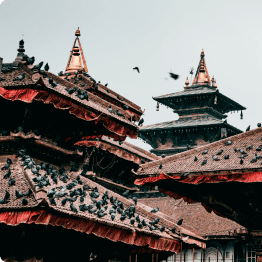
Devraj is the best! could not have asked for a better guide. cool, calm, and collected. you won’t regret it!!
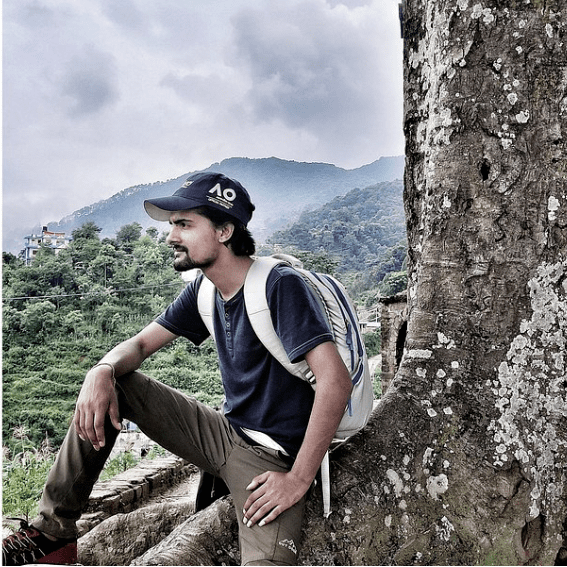
Exciting hiking to the hill of Ichangu Narayan. The flawless environment with prefect hiking condition.
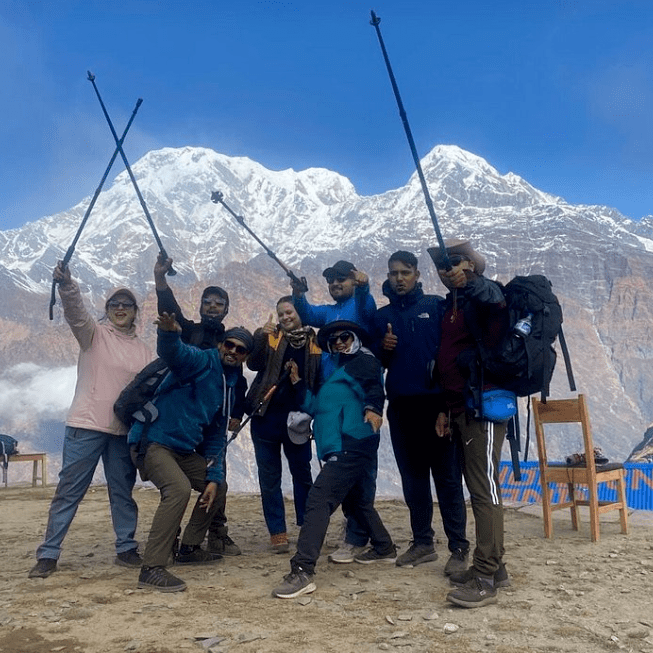
The best trekking agency ever. Guide were very cooperative and supportive.every thing here organized were of good manner.loved my trip to mardi with this team 😊
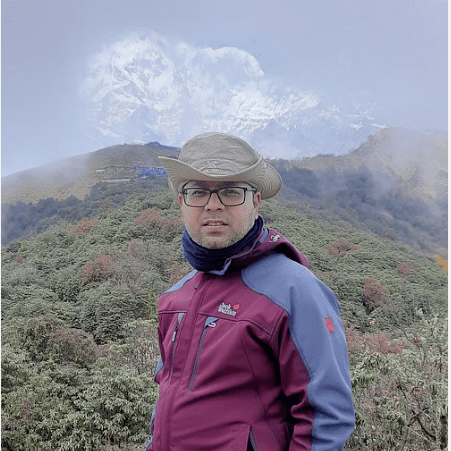
Trip to mardi was great. Amazing guide and strong porter. I felt great watching estonishing view of Machhapuchhre and Mardi himalayas.